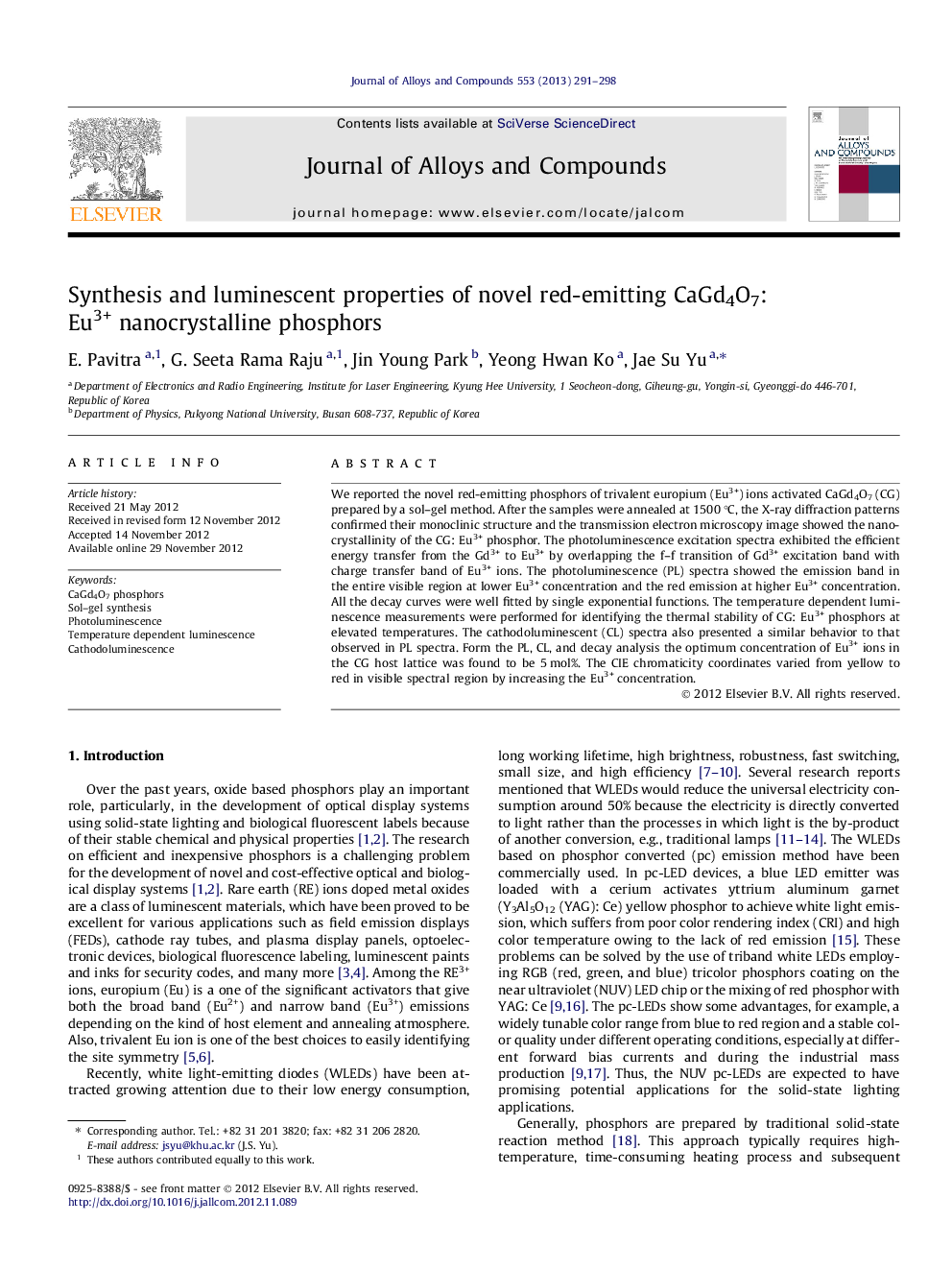| Article ID | Journal | Published Year | Pages | File Type |
|---|---|---|---|---|
| 1614920 | Journal of Alloys and Compounds | 2013 | 8 Pages |
We reported the novel red-emitting phosphors of trivalent europium (Eu3+) ions activated CaGd4O7 (CG) prepared by a sol–gel method. After the samples were annealed at 1500 °C, the X-ray diffraction patterns confirmed their monoclinic structure and the transmission electron microscopy image showed the nanocrystallinity of the CG: Eu3+ phosphor. The photoluminescence excitation spectra exhibited the efficient energy transfer from the Gd3+ to Eu3+ by overlapping the f–f transition of Gd3+ excitation band with charge transfer band of Eu3+ ions. The photoluminescence (PL) spectra showed the emission band in the entire visible region at lower Eu3+ concentration and the red emission at higher Eu3+ concentration. All the decay curves were well fitted by single exponential functions. The temperature dependent luminescence measurements were performed for identifying the thermal stability of CG: Eu3+ phosphors at elevated temperatures. The cathodoluminescent (CL) spectra also presented a similar behavior to that observed in PL spectra. Form the PL, CL, and decay analysis the optimum concentration of Eu3+ ions in the CG host lattice was found to be 5 mol%. The CIE chromaticity coordinates varied from yellow to red in visible spectral region by increasing the Eu3+ concentration.
► CaGd4O7 (CG): Eu3+ nanocrystalline phosphors were prepared by sol–gel method. ► The luminescence spectra of CG: Eu3+ showed the dominant red emission. ► The thermo luminescence of CG: Eu3+ phosphors showed weak thermal quenching. ► The quantum efficiency of CG: Eu3+ phosphors was found to be about 47.4%, and 42.5%.
